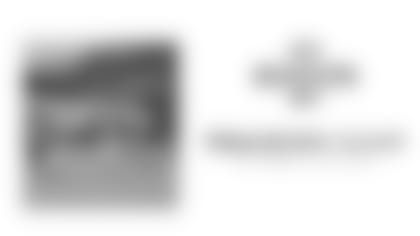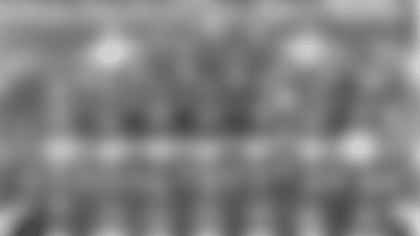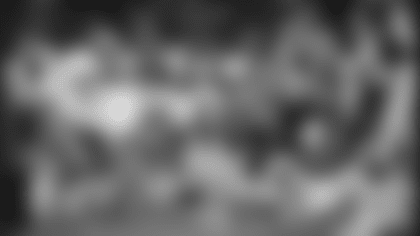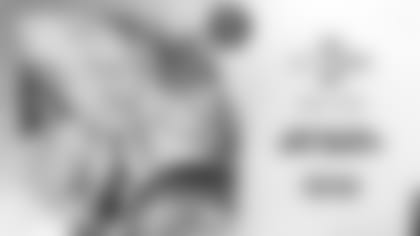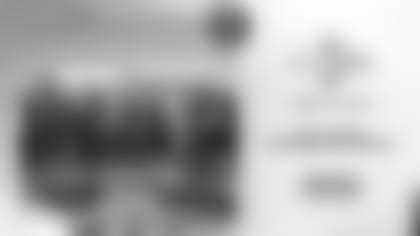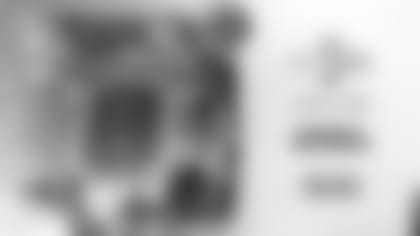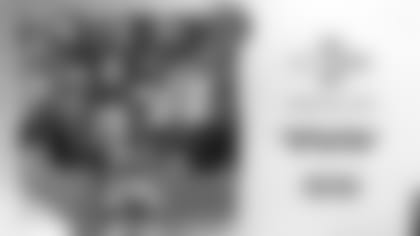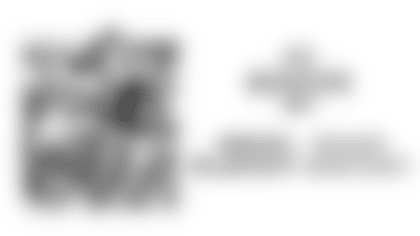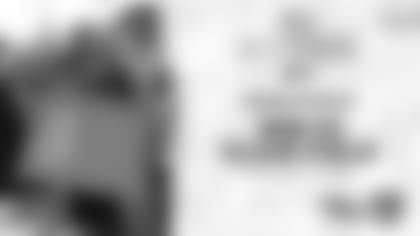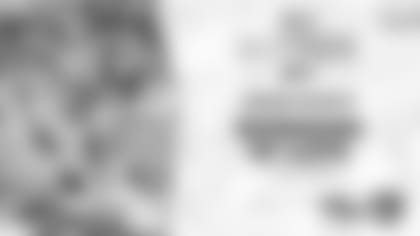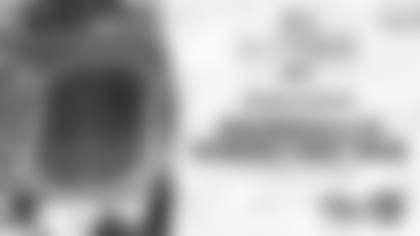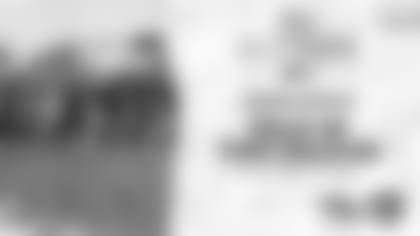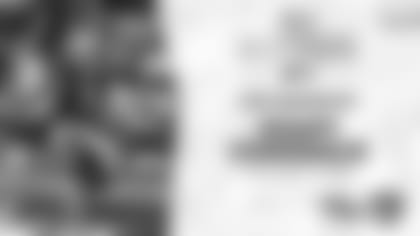St. Mary's College, 1955-1967
Moraga, CA
Training camp opened for the first time at St. Mary's College in Moraga on July 10, 1955 with a record-breaking 52 rookies and free agents. Among them were the club's first four draft picks—defensive back Dicky Moegle, tackle Frank Morze, running back Carroll Hardy and linebacker Matt Hazeltine.
The highlight of opening day was Dr. William O'Grady's physical exam for players, but it did not take long for the surprises to start.
The following morning, coach Red Strader, in his first season at the helm for San Francisco, released guard Bruno Banducci, the last of the original members of the 1946 San Francisco 49ers. Banducci, a long-time local favorite, was the 49ers team captain, a two-time All-Pro, and an All-America selection during his college years at Stanford.
Once the players took the field at St. Mary's, they noted a distinct change in the climate. Rather than the tree-lined field they knew at Menlo Park, they trained in the blistering heat of the Moraga Valley. Moegle, the 20-year-old rookie sensation from Rice, claimed to have dropped nine pounds during one afternoon of practice.
Despite the heat, Chico Norton, the 49ers equipment manager from 1955-1984, claimed St. Mary's was a well-equipped and spacious facility surrounded by undeveloped land.
"It was out in the boondocks in those days," Norton said. But the silent evenings gave way to several boisterous youth summer camps and school activities held on campus during the day.
After a week of conditioning and drills, Strader was ready to test his rookies. He arranged for a scrimmage in Moraga with the Fort Ord Warriors that was open to the public. The Warriors consisted of several former college and pro football stars serving military duty with the U.S. Army. Among them were seasoned NFL players Rudy Bukich, a quarterback with the Los Angeles Rams, Pittsburgh Steelers defensive back Paul Cameron and Sam Baker, a running back with Washington.
Pro football attracted a hearty crowd to Moraga. On game day, the tiny town of less than 9,000 was inundated with cumbersome traffic and a crush of sports fans all eager to get a glimpse of the 49ers. The football facility lacked bleacher seating, but an estimated 8,000 fans stood seven deep around the field in an effort to see the action. Many of them parked up to two miles away and walked to the scrimmage. Thousands more who were stuck in traffic gave up and headed home.
Few fans seemed to notice a subtle change to the 49ers uniforms. For the first time, the jersey numbers were outlined in black. The Army squad won 24-6. In the aftermath, Strader stressed that the purpose of the scrimmage was to see his new players in action.
"Ours wasn't a team objective," Strader told local reporters. "We wanted to see individuals, and we did."
He was impressed by the performances of Hazeltine and defensive back Bobby Luna, a rookie from Alabama who intercepted three of Bukich's passes. Both men earned starting roles with the 49ers that season.
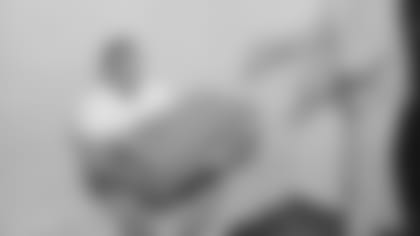
In 1956, team owner Tony Morabito hired former 49ers quarterback Frankie Albert as head coach. In an opening day press conference, Albert presented a take-charge approach. Attention to detail would rule his club's daily schedule. He explained that he carefully designed his first training camp so no time was wasted during drills. He wanted his club ready for the NFL Champion Cleveland Browns in the first preseason match on August 19 at Kezar Stadium.
"We're as well organized as any club in the league," Albert said. "It's the same sort of thing Sid Gillman (head coach of the Los Angeles Rams) and Paul Brown (head coach of the Browns) have been doing...It's a checkoff plan designed so that we know what we're going to do at every one of our sessions...We have to find our 33 best players in a hurry."
Among the new players Albert was counting on to make an impact were quarterback Earl Morrall, a first-round pick (second overall), guard Bruce Bosley, a second-rounder, and 14th-round selection R.C. Owens from the tiny College of Idaho.
Owens was a basketball phenome at COI. He teamed with future Basketball Hall of Famer Elgin Baylor to lead the Yotes to an undefeated season in 1955 and still owns the school's all-time rebounding record. His size (6-foot-4) and leaping ability would soon be put to good use on the gridiron where he worked with Y.A. Tittle on a nearly unstoppable offensive weapon: the "Alley-Oop" pass.
Albert added a new twist to the offense that was evident in camp scrimmages. He eased the play-calling duties away from the quarterbacks and used offensive linemen to shuttle in plays. Albert was quick to mention that Tittle, the starting signal-caller, would be allowed to call his own plays in certain situations.
Defensive end Charley Powell, who had been tinkering with a pro boxing career, reported to camp looking lean and fit. The 24-year-old spent the offseason working diligently with boxing great Archie Moore but he assured Morabito his focus was on football. After retiring in 1961, Powell turned his full attention to boxing and became a highly ranked fighter, taking on Muhammed Ali (then known as Cassius Clay), Floyd Patterson, and knocking out Cuban champ Nino Valdes.
During the second week of camp, nearly 2,000 spectators showed up in Moraga to see the club's initial scrimmage. Undrafted rookie Clyde Conner, a former College of the Pacific basketball star, earned praise from Albert, and eventually a spot on the team after making a leaping grab on a 21-yard pass from quarterback Maury Duncan.
The daily monotony of training camp sometimes called for nighttime diversions. Veteran linemen Bob St. Clair and Ed Henke used their downtime for recreational hunting. With Henke at the wheel of his Cadillac, they eagerly drove through Contra Costa County's back roads looking for deer and blasting away with rifles and shotguns.
"When they would get a deer, they would bring it back and dress it in the shower," Owens recalled. St. Clair, who regularly dined on raw meat, then put on a show for his teammates. "He would intimidate rookies by reaching into one of those deer and eating the liver while it was still warm."
Local neighbors eventually complained about the noisy nighttime shootouts and the 49ers coaches confiscated the firearms.
In 1959, 49ers owner Vic Morabito introduced Howard "Red" Hickey as head coach, replacing Albert. Hickey served four years as an assistant under Albert and Strader before assuming command and had assembled a convincing three-year plan to develop the 49ers into NFL champions.
In the last week of July, 45 rookies and free agents sweated through their first days of practice at St. Mary's College. Hickey told the assembled reporters he was pleased to see the "over-eagerness" of his rookies. Among them were tackle Monte Clark, defensive back Dave Baker, defensive end Dan Colchico, kicker Tommy Davis and a receiver who would later make a name for himself as a college coach at Nebraska, Tom Osborne.
In the very first practice, Hickey was impressed with the speed and agility of undrafted running back Paul Lowe from Oregon State. Two weeks later, in the 49ers first preseason game against Washington, Lowe looked like a keeper. On his first carry as a pro, Lowe darted 77 yards untouched to the end zone. In the fourth quarter, he broke off a 40-yard run to set up the game-winning score. Lowe finished the day with 115 yards on four carries and one TD. But with Joe Perry, Hugh McElhenny, and J.D. Smith in the 49ers backfield, Lowe was unable to earn a roster spot. He eventually caught on with the American Football League's Los Angeles Chargers in 1960 and developed into one of the league's premier running backs, earning two Pro Bowl berths.
As the veterans filtered into camp, gripes about Moraga's baking heat began to surface. At one midweek practice (August 6, 1959) temperatures reached 105 degrees. Billy Wilson and Bob St. Clair claimed to have dropped eight pounds that day. McElhenny lost five pounds.
As training progressed, Hickey revealed several position changes for the 1959 team. He moved McElhenny from running back to flanker to better use his sure hands and elusiveness. Hickey also tried Pro Bowl tackle St. Clair at defensive end.
Hickey's reasoning behind the St. Clair move correlated with the 1958 club's defensive deficiency in surrendering 5.5 yards per carry to opposing backs. Hickey figured a defensive front featuring Leo Nomellini, Charlie Krueger and St. Clair in 1959 would be nearly impenetrable. To replace St. Clair at offensive tackle, coaches prepared rookie Monte Clark. Then, just before the season began, they reversed course. On opening day, St. Clair was back on offense and Clark started at defensive tackle
Hickey also downplayed an emerging quarterback controversy as third-year man John Brodie and Tittle, an 11-year vet, competed for the starting job. In early scrimmages, they alternated at running the offense. But during the second week of camp, Tittle was named the 49ers team captain, then started and played most of the 1959 preseason opener against Washington. Tittle eventually would be traded to the New York Giants after the 1960 season, opening the door for Brodie.
Despite the changes, local scribes wrote disparagingly of the 49ers chances for 1959. They pointed out the 49ers finished 6-6 in 1958 and still appeared to be inferior to the Los Angeles Rams, Chicago Bears and Baltimore Colts.
"I don't see this as a cellar club," Hickey snorted. "We've got too many good players to wind up on the bottom...We'll be tough."
San Francisco Examiner sports columnist Prescott Sullivan was not impressed with the 49ers roster but loved the team's impeccable band. After the first preseason game at Kezar Stadium, he made his preference known.
"Joe McTigue, the (band's) dapper leader, had his men playing with fine spirit," Sullivan wrote. "We had the glasses on one of the tuba players. He had enough wind in his cheeks to fill the sails of a four-masted schooner. A sign the 49ers band is out to make this its best year ever."
The press box scribes also noted an interesting change to the 49ers apparel. The club switched its helmet and pants colors from gold to silver. And, as Hickey promised, the 49ers improved on their 1958 record by posting a respectable 7-5 mark in 1959.
By 1960, the fearsome reputations established by the 49ers defensive linemen filtered back east, and tackle Len Rohde, the team's fifth-round draft pick that year, heard the rumors. While driving to rookie camp from his home in Illinois he began to doubt his ability to match up with a pair of fabled 49ers.
"I was nearing California and I kept thinking about the guys I would be competing with, like Leo 'the Lion' Nomellini, who supposedly had wrestled a bear, and Bob St. Clair, who ate raw meat and liver. The closer I got to camp the bigger those guys got in my mind. I was ready to turn around. I thought I had no chance."
Instead, Rohde earned a starting job at tackle and played in 208 consecutive 49ers games over 15 seasons.
By 1965, Jack Christensen was in his second full year as head coach of the 49ers and the team was trending upward. Meanwhile, the NFL and AFL were engaged in a full-blown bidding war to sign players.
The 49ers reported to camp at St. Mary's College in mid-July with 27 rookies and 18 veteran free agents. Dr. Lloyd Milburn performed the annual physicals but had bad news for St. Clair.
The future Pro Football Hall of Famer failed his medical exam and was informed the Achilles tendon injury that ended his 1964 season had not healed. St. Clair decided to hang up his cleats, ending a storied career at Kezar Stadium. The San Francisco native played in a record 189 games at Kezar with three local teams - Polytechnic High School, University of San Francisco and the 49ers. In 2001, the city of San Francisco honored its native son by renaming Kezar Stadium's playing turf "Bob St. Clair Field."
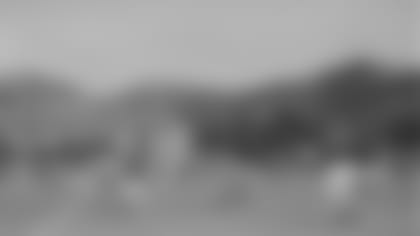
In 1965, Tittle reported to the Moraga camp as a 49ers quarterback coach for the first time. The future Pro Football Hall of Famer worked alongside one of his favorite pass-catching targets, Billy Wilson, the club's receivers coach.
"I've been in football all my life and I just want to stay in it and help this team in some way," Tittle said.
He claimed it was a gift to work with 49ers QBs John Brodie, George Mira and rookie Rod Dowhower.
The mid-1960s also brought together a mischievous crew of 49ers pranksters that included fullback Ken Willard, receiver Dave Parks, defensive tackle Charlie Krueger, linebacker Dave Wilcox and guard Howard Mudd. Willard, a four-time Pro Bowl selection with the 49ers from 1965-1973, seemed to be at the heart of many of the antics, either as instigator or recipient. Parks recalled one incident at the club's St. Mary's College dormitory.
"Someone, I won't say who, ran a garden hose up the side of the building to Willard's room. It was on the second floor," Parks recalled in an interview before his death in 2019.
The hose was secured near the head of Willard's bed and crudely hidden behind pillows and blankets. After a hard day of practice, the former North Carolina fullback returned to his room in the dark of night ready to hit the sack. Between giggles, Parks recalled what happened next.
"The water was turned on and Ken came running out of the room and knocked on my door. He thought I did it. He didn't mention being wet. He was mad because he just bought some new shoes and they were floating around in his room. To this day he thinks I did it."
Two veteran linemen, the 6-foot-4, 260-pound Krueger and the 6-foot-3, 258-pound Mudd, had a running battle attempting to pull bigger and better pranks on one another. Before one practice, Krueger thought he'd finally outdone Mudd.
"Charlie was one of the best (at pulling pranks)," Wilcox said. "Somehow, Charlie found a tiny little green frog and put it in Howard's Copenhagen (dipping tobacco). Everyone knew about it but Howard, so we were all waiting for him to put it in his mouth. As soon as he did, he knew something was up. But he wouldn't let on. He wouldn't spit out the frog. He didn't want to give everyone the satisfaction of seeing that."
Even the team's highest-paid player was subject to the skullduggery of his teammates. In 1966, the AFL's Houston Oilers teased Brodie with a contract worth nearly $750,000, an enormous jump from the $35,000 he was paid in 1965. After the 49ers upped their contract proposal to nearly $1 million over three seasons, Brodie returned from a Hawaiian vacation, signed it, and reported to St. Mary's. He was fined $3,000 for being two weeks late to camp.
At Brodie's first practice after returning to the St. Mary's campus, he lined up behind center Bruce Bosley, took the snap, and felt a prickly sensation. Bosley had handed him a Hawaiian pineapple with a note pinned to it that said: "One Million Dollars, Minus Three Thousand."


